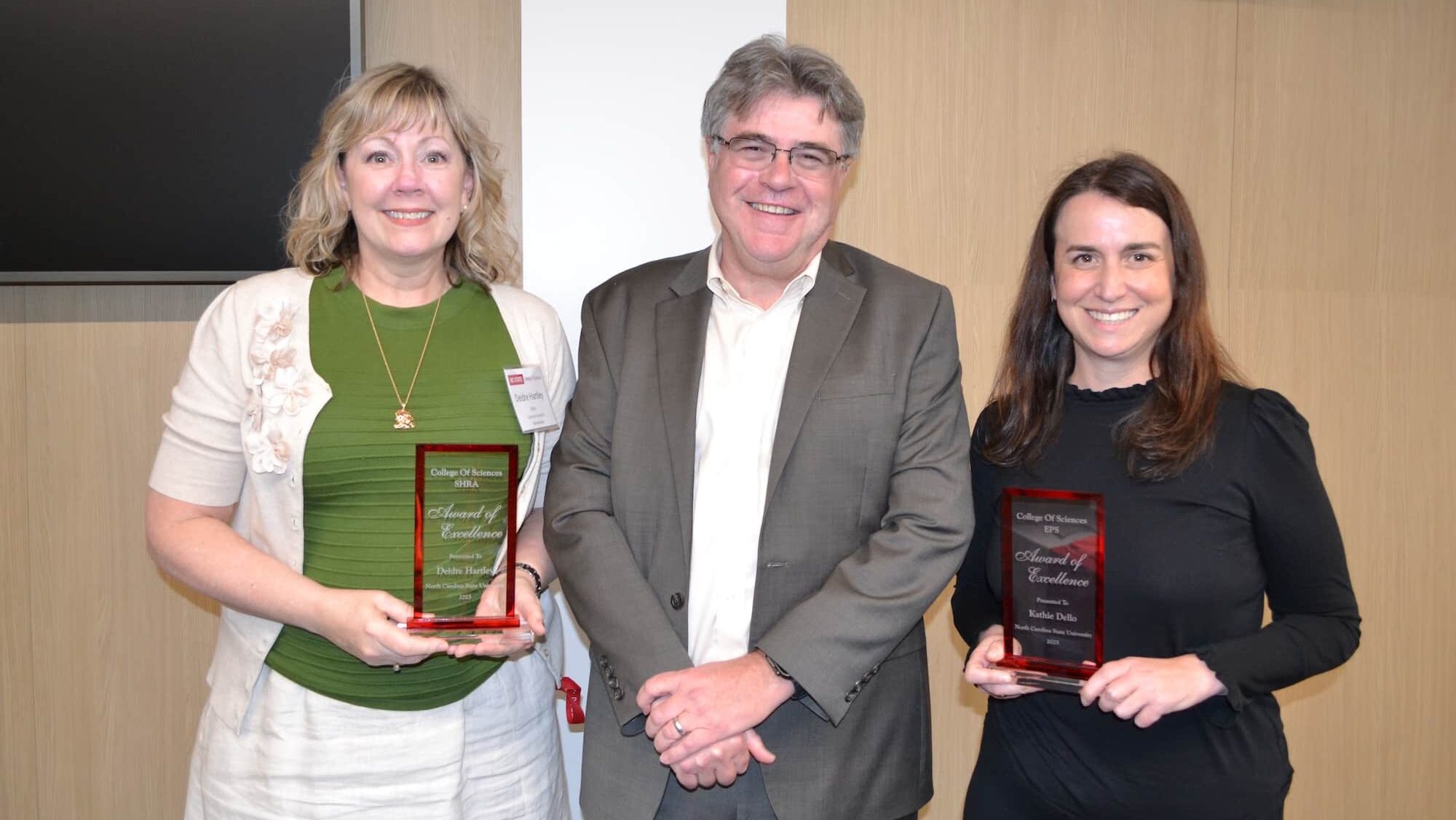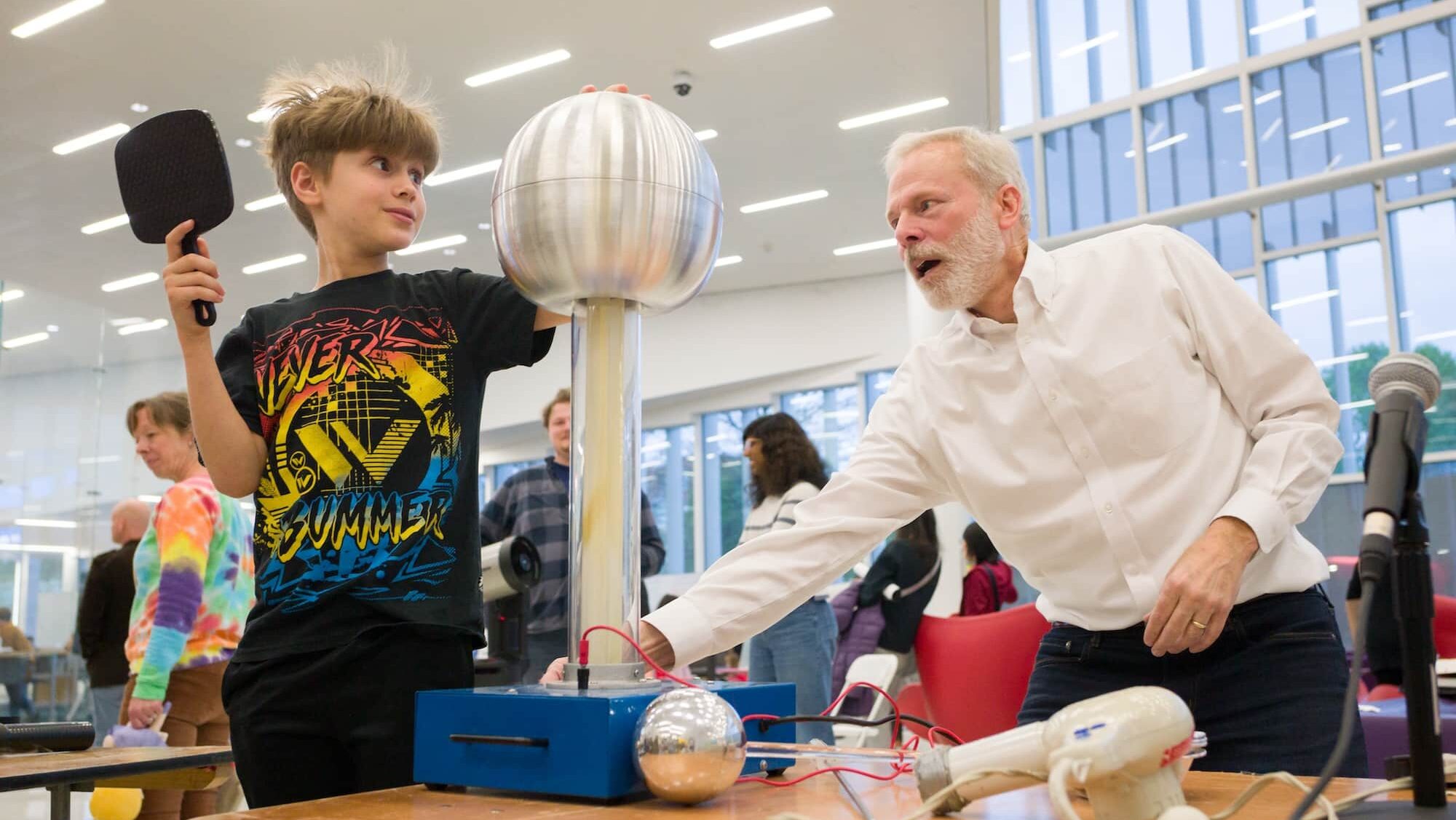Letters From Albert Einstein
An exchange of letters between Albert Einstein and former NC State mathematics professor Raimond Struble is now permanently housed at NC State University Libraries.
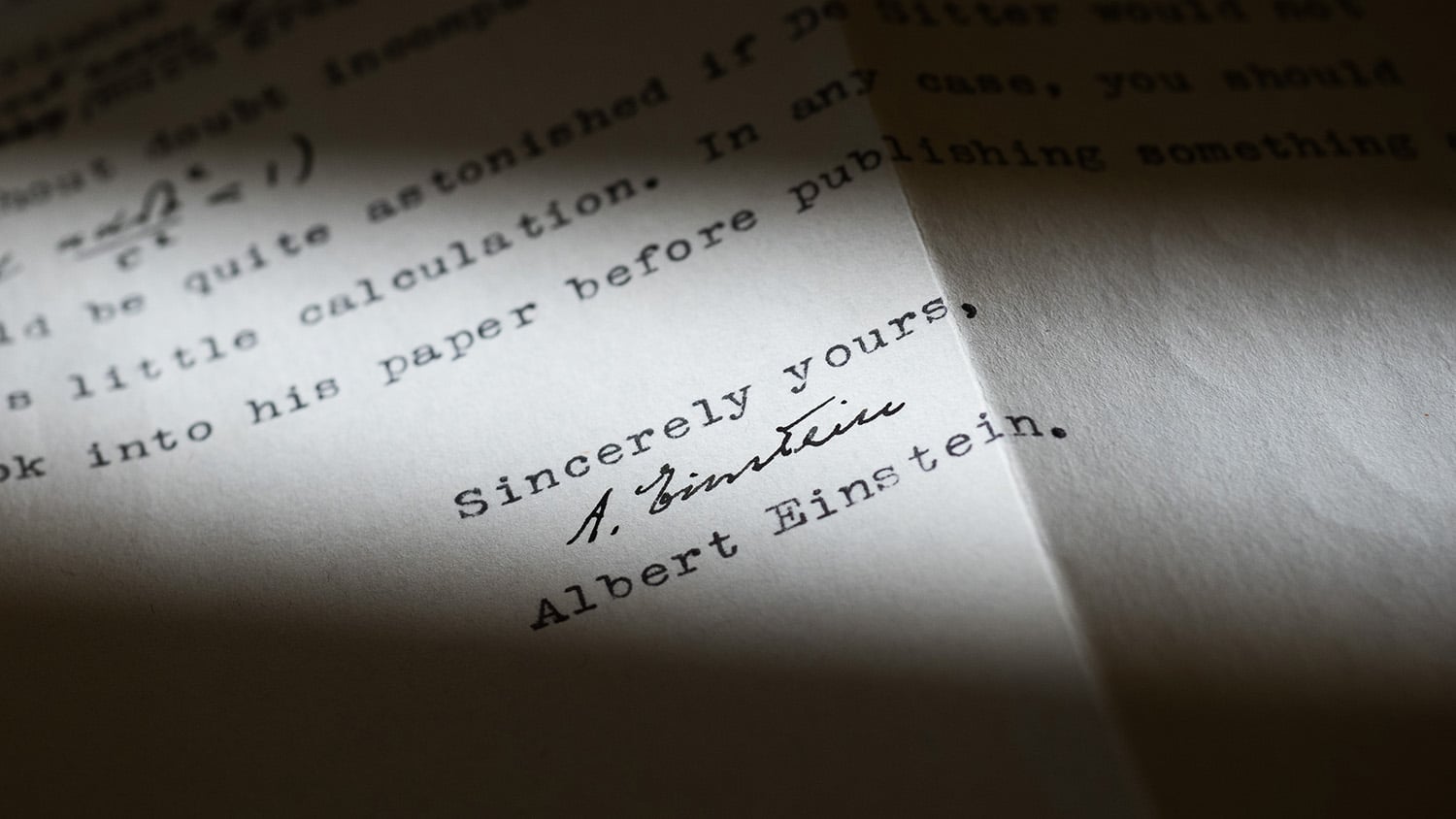
Widely regarded as one of the greatest scientists of all time, Albert Einstein developed the general theory of relativity, published over 300 scientific works and won a Nobel Prize in Physics. He also had a surprising NC State connection.
In 1947, the renowned theoretical physicist responded to a letter from University of Notre Dame doctoral student Raimond Struble, who went on to serve as an NC State mathematics professor from 1958-1987. Struble had made observations about binary stars that would support Einstein’s theory of special relativity and refute physicist Walther Ritz’s emission theory of light.
With the encouragement of his mentor, Karl Menger, Struble wrote to the managing editor of Physical Review, John T. Tate, proposing a letter to the editor about his observations. Unconvinced that Struble’s findings were noteworthy given that Ritz’s theory had already been discredited by that time, Tate turned him down. Struble and Menger then sought insight from physicists E.L. Hill and Subrahmanyan Chandrasekhar, who also expressed reservations — Hill questioned whether Ritz’s theory needed further refuting or if it was “already sufficiently defunct.” Chandrasekhar noted that Struble’s observation hadn’t previously been considered, but he and Hill still suggested that Struble amend his argument.
Seeking a final verdict on the validity of his observations, Struble contacted Einstein himself. The famous physicist wrote back to the unknown young graduate student, generally agreeing with Struble’s conclusions but offering revisions to his math. Not wanting to unduly take credit for Einstein’s contributions, Struble ultimately decided not to publish his work.
Struble, who passed away in 2013, told hardly anyone about the letters. But today, they’re accessible to the public. Struble’s daughter, Barbara Moore, generously donated the Struble-Einstein letters to NC State University Libraries’ Special Collections Research Center (SCRC) in June, and now they’re permanently housed at the D.H. Hill Jr. Library.
Finding a Forever Home
Moore was in college when she learned about the letters from her mother, but she wasn’t surprised her father had never mentioned them.
“He didn’t talk much, but he showed love in other ways,” she said.
Those ways included single handedly building a swimming pool for his five children, setting up a pole vaulting pit in the backyard for his sons and secretly putting down money to open a new roller skating rink (and then running it part time) after the one Moore attended shut down.
“I didn’t find out about that until I was in my 40s,” said Moore, who once placed first in a state ice skating competition and competed in nationals.
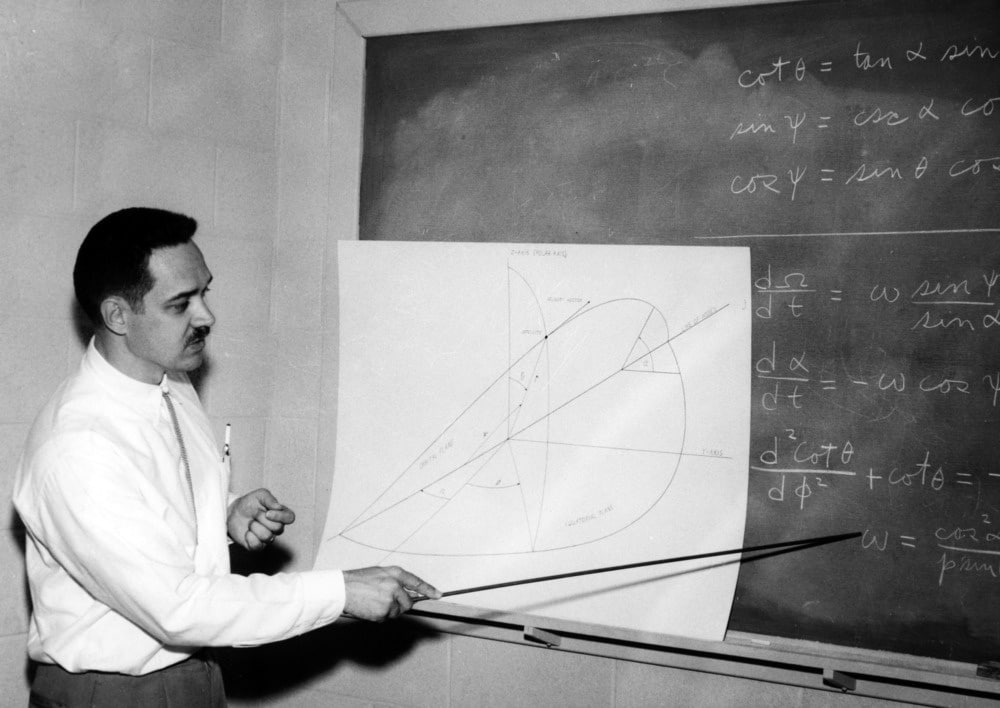
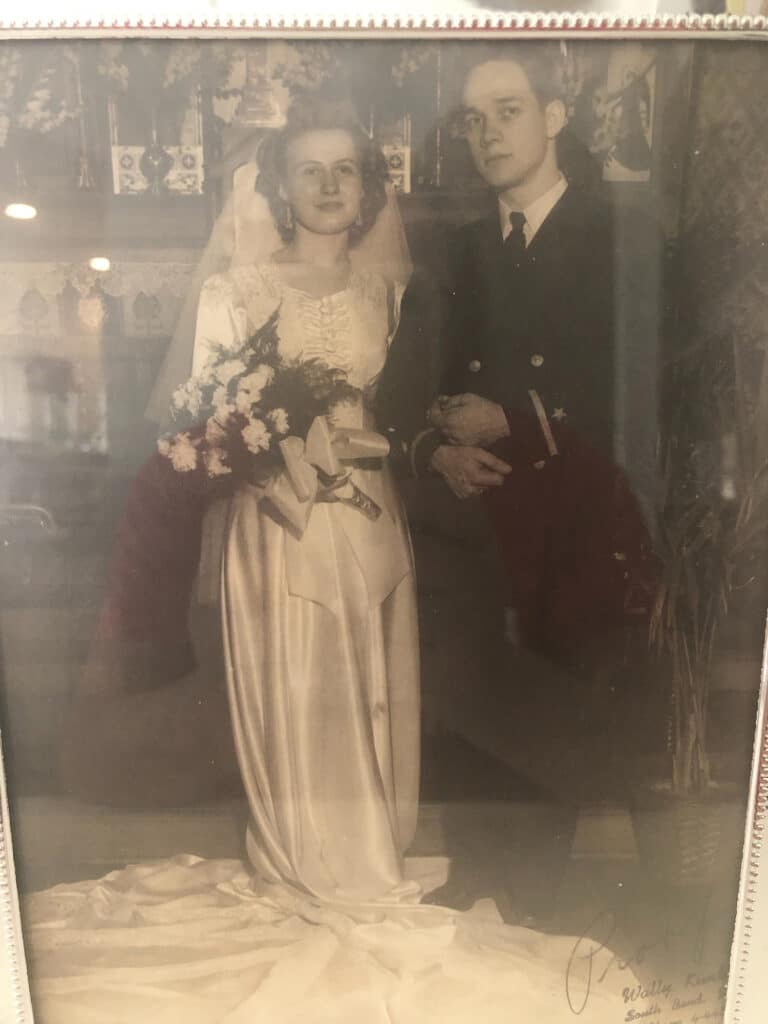
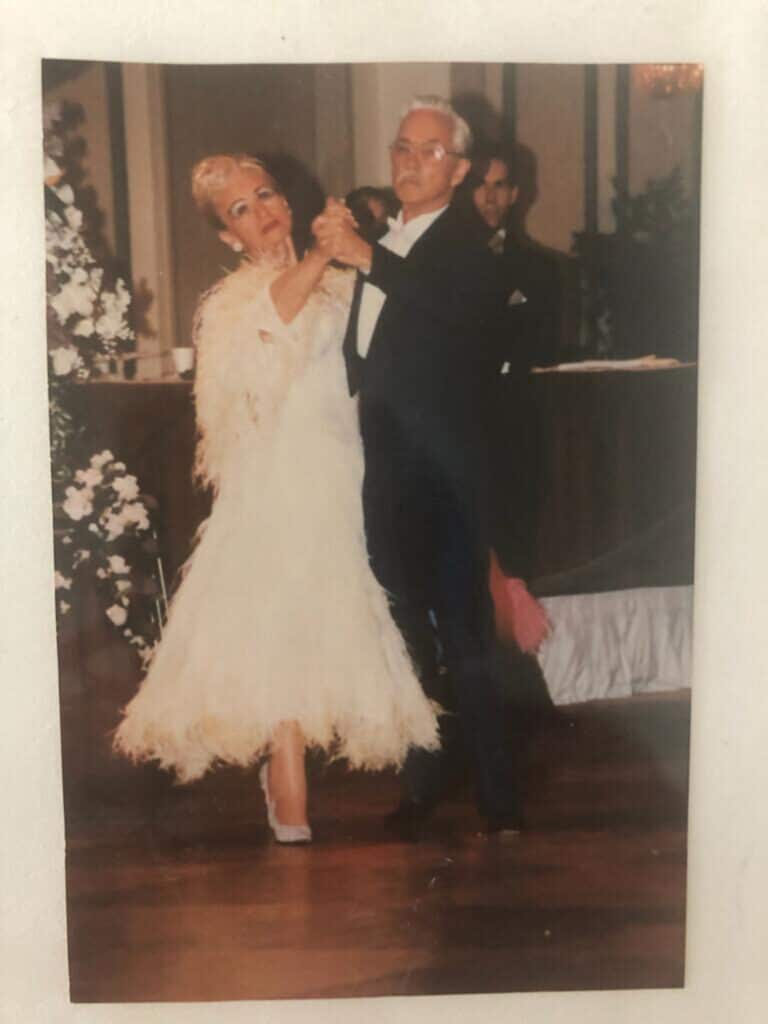
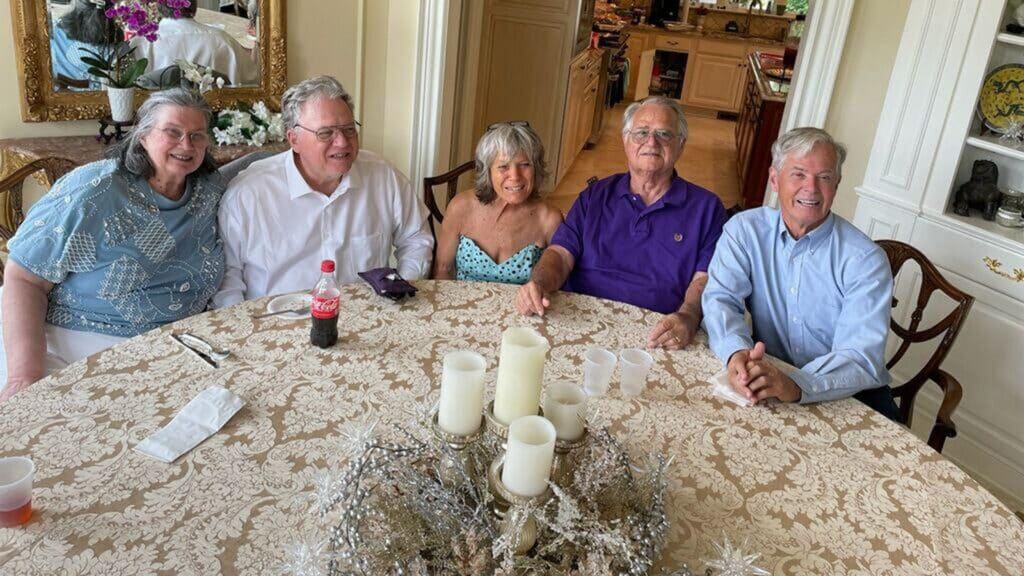
Even Struble’s longtime colleagues didn’t hear about the letters until after his death.
“The letters were a surprise to me,” said Joe Marlin, a professor emeritus of mathematics at NC State and Struble’s former doctoral student and colleague. “(Struble) was a really good mathematician, probably the best State had during the time he was there. But he was not somebody that would boast. He was honorable all the way through.”
Some of Moore’s siblings were keen to keep the correspondence in the family, but she knew they’d eventually have to be given over to a place that could preserve and store them safely and permanently. She purchased the letters from her family and began deciding on a forever home for them. Initially, she considered her father’s alma mater, the University of Notre Dame. She also considered Princeton University, home to a collection of Einstein’s papers and where Einstein had once occupied an office, given lectures and received an honorary degree. In the end, Moore decided to donate the Struble-Einstein letters to NC State due to her family’s strong ties to Raleigh and the university. (Coincidentally, Struble had turned down a job at Princeton at the start of his career to work at NC State).
Leadership
Struble helped establish the applied mathematics doctorate program.
Scholarship
Struble’s research focused on ordinary differential equations and generalized functions in operational calculus.
Mentorship
Struble produced 12 doctoral students in the Department of Mathematics.
With Struble spending his entire 30-year career at NC State’s Department of Mathematics, Moore and her siblings had grown up in Raleigh. Two of her brothers graduated from NC State and her late husband — who was a student of Struble’s before he met Moore — earned his doctorate from the university.
After working with Scott Troutman, director of development at the College of Sciences, and Gwyneth Thayer, associate head and chief curator for SCRC, Moore was confident she’d made the right choice.
“I could tell that Scott cared about the university, so I knew I could trust him,” said Moore.
After Troutman had connected them, Thayer visited Moore at her home and explained how the Libraries staff would process and preserve the letters, as well as how people would be able to access them.
“(Thayer) was very knowledgeable and kind,” said Moore.
Preserving a Moment in History
The Struble-Einstein letters live in a climate-controlled vault at D.H. Hill Jr. Library, each one carefully archived by Cathy Dorin-Black, a university library specialist at SCRC, in its own labeled acid-free folder.
With some collections consisting of hundreds of boxes, archivists typically process items in groups rather than one by one. The Struble-Einstein collection consists of just 12 documents, which gave Dorin-Black the opportunity to review and process each one individually.
“I’m a theoretical physics buff in my spare time, so processing the collection was very exciting for me,” she said. “One particularly exciting thing about Einstein’s letter to Struble is that it’s not just a typed letter. There are a few notes handwritten by Einstein in there.”
“It’s an honor for the university to have these letters. It’s a great tribute to Struble and his work at NC State.”
After processing each document, Dorin-Black wrote a collection guide to help viewers make sense of what they’re reading. Next, the Libraries digitization team uploaded the letters and Dorin-Black’s descriptions into a digital format, available for anyone to view. Researchers and the general public can also make an appointment to view the letters in person.
SCRC’s goal is to get materials into the hands of the NC State community — and the wider research community — as quickly as possible. SCRC has little to no backlog, and counts on the help of a preservation team to maintain efficiency. Archives and special collections teams don’t always have dedicated preservation units, but the one at SCRC runs assessments to determine which resources and tools are needed to conserve collections effectively. Their responsibilities also include repairing and stabilizing items, monitoring environments, and preparing for and responding to disaster events.
“All that we do enriches the university community,” said Thayer, who has a doctorate in public history. “I got into this field because I like working with the raw materials of history. Primary sources are the raw materials of history, the building blocks that we piece together to create the story about what happened in the past.”
SCRC is particularly excited about sharing the Struble-Einstein collection with the public because of the deeper appreciation and understanding of research that it could inspire. The letters provide a tangible exchange of ideas and feedback. They offer a firsthand look at how theories are generated and improved upon, potentially leading to important discoveries that can shape our society.
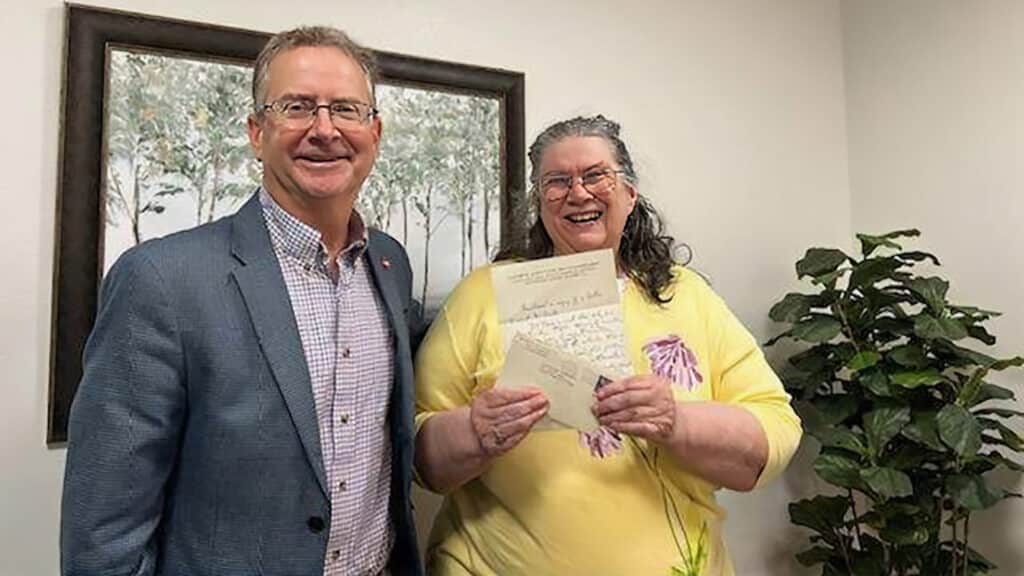
“People might know e=mc2 and who Einstein is, but they might not necessarily know how to describe what research is and how it takes place. Sometimes, research is just sharing ideas with each other,” said Sandra Varry, head of SCRC.
For Moore, having the letters be accessible to the public at NC State is a wonderful way to honor her father’s legacy.
“I always thought Daddy should have an endowment established in his honor, but he didn’t care about that. He was very humble,” said Moore. “He did so much in his career and I felt people should know about it.”
The NC State community is just as proud to have a collection showcasing Struble’s innovative spirit and contributions to mathematics.
“It’s an honor for the university to have these letters,” said Troutman. “It’s a great tribute to Struble and his work at NC State.”
- Categories:
